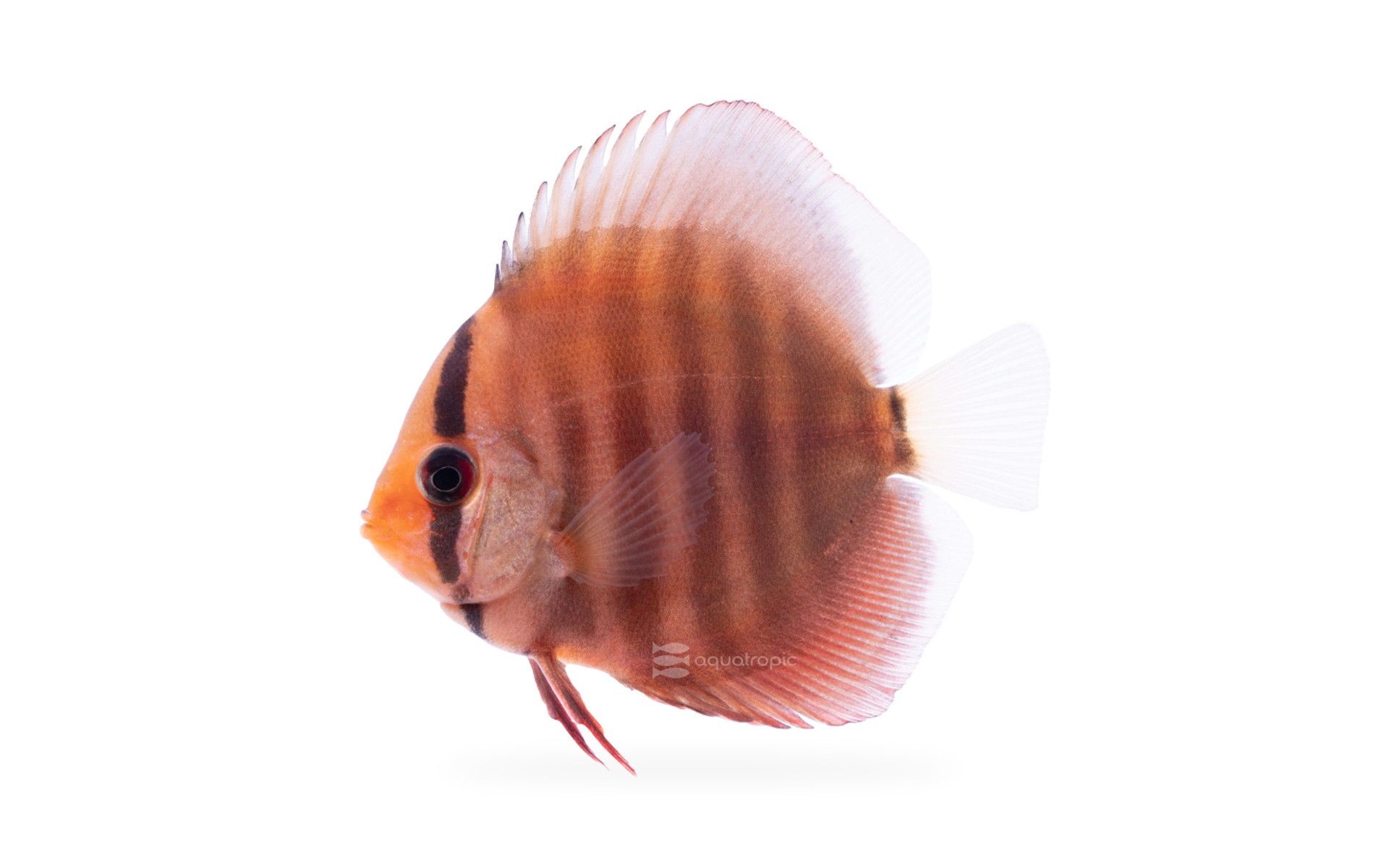Discussing Discus

Discus fish (Symphysodon sp) are a South American Cichlid, revered for their unique size, shape & gorgeous colors, but also feared as too difficult by many hobbyists. Their amazing colors have come though thousands of generations of selective breeding as the wild fish are generally tan, some with vertical barring and a few with hints of color around the margins. These same wild fish can be found today throughout the Amazon basin, where ever there is slower water with good cover, like dense vegetation or downed trees. The largest of these fish might get to be eight inches long, though a more reasonable adult size expectation is five to six.
Due to the discus tall body shape, similarly tall aquariums make great displays for them. We suggest using a 55 gallon tank as a a minimum, for three to five young fish. Larger schools will need more space, and you should expect to get into a bigger setup as your fish grow. 90 and 110 tall aquariums make amazing displays. Wild Discus come from areas generally low in pH and hardness (dkh), and while this is less important than it used to be after so many generations of captive breeding, your display water should still be on the soft, acidic side; this is important especially if one is hoping to spawn them. Discus tanks should be warm, think low 80s as a minimum, well aerated, and the water kept clean.
Discus are not very strong swimmers and as such current in the display should be nominal. If keeping Discus with other fish, add the discus last to prevent aggression issues. All the discus you add should be a similar size and ideally added all at once. If you add bigger ones, add them last. Because discus can get so large, hobbyists are prone to feeding them larger food items, though this is generally counterproductive for keeping them healthy. They are not aggressive feeders, feeding mostly near the surface, and have fairly small mouths. We suggest feeding them slowly sinking foods over a few small doses, ideally multiple times per day. Luckily, generations of captive breeding have made them very adaptable to processed foods. Feed them a high quality, small pellet and flake foods. Supplement this with appropriate meaty / thawed foods like blackworms and bloodworms. Take care not to overfeed with pelletized foods as they are very nutrient dense and Discus (as well as many other fish) will over eat them if given the opportunity. Breeding discus can be done but is difficult for the home aquarists. If breeding Symphysodon is something you're interested in trying, start with a bigger aquarium and buy 6 or more similar sized fish. Pairs will naturally form as the Discus grow out. Start removing fish until you have only paired fish in the display. They will lay eggs on smooth vertical surfaces like large leaves or stones, and parents will work together to defend the nest and the babies when they hatch. One of the coolest things you can do in an aquarium is getting the fry to a free swimming size as they will follow the parents incredibly closely and will feed off of the parents slime coat. As a warning, new pairs are usually terrible parents, so don't expect them to succeed past laying eggs in the first few spawns. Over time they will get better at taking care of their young. No matter what discus you choose, the care is essentially the same. While these fish are now available in a wild rainbow of colors, their appearance is very dependent on the general health and even mood of the fish. Stressed fish will adopt darker over all colors and their barring will be more noticeable. Fish with bad nutrition will get skinny and pale. This is a sign you need to change something in their diet.
Discus now are sustainably bred in captivity in almost every shade of the rainbow. These stunning fish may take a bit more care than some other cichlids because of their somewhat unique requirements, but you can be rewarded with one of the most interesting fish and caring parents in all the Cichlid family. Ask your LFS what morphs of captive bred discus are available from Aquatropic today!